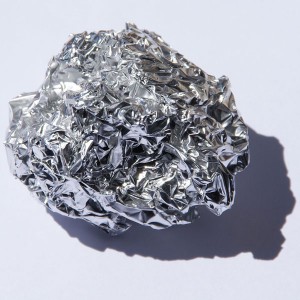Have you ever wondered “what can aluminium be used for?” For a breakdown guide on the uses of aluminium and how aluminium was discovered, you’re in the right place. Read on to find out more about what aluminium is made of and how anodised aluminium jewellery could be a new addition to your jewellery making repertoire.
Aluminium is not a material which immediately lends itself to the production of jewellery. It is by contrast an element with huge domestic and industrial capability. Aluminium is more associated with the humble drinks can or the wafer-thin kitchen foil that we take for granted during our everyday activities.
It is a metal of immense strength, but it’s also extremely light and ductile; much lighter than steel. In fact, this makes it ideal for any application where weight can be an issue for example aerospace technology or car production. It actually represents the second largest metal market in the world which is a great indicator of its potential. But more importantly it is 100% recyclable which makes it very much a metal of the future.
What is Aluminium Made Of?
Aluminium is not a naturally occurring metal. Aluminium properties mainly include a raw material called bauxite which is only found in a handful of locations word wide. This bauxite is first heated to immense temperatures to produce alumina, which is then transformed into aluminium by way of electrolysis. It is a complicated process which creates many chemical by-products so production is tightly regulated and monopolised by large companies with the means to carry out the whole process from start to finish.
The demand for aluminium is huge and consistently growing with China now consuming 25% of the world’s production thanks to its booming economy. It is largely directed into the automobile industry in a bid to reduce the weight of vehicles thus reducing fuel emissions; a 10% reduction of car weight results in a 9% increase in fuel consumption efficiency and with the EU introducing increasingly stricter guidelines on CO2 emissions, this means big business.
History of Aluminium: When Was Aluminium Discovered?
However, things have not always been this way and if you look back at the discovery and history of aluminium, the treatment and usage of it were very different. Aluminium is a relatively new metal, only discovered in 1825 by a Danish chemist Hans Christian. Production methods were so complex that it wasn’t until 1889 that aluminium was successfully produced on any significant scale and at that time it was considered rarer and more valuable than gold! It is well documented that Napoleon lll served his state dinners on aluminium plates with his rank and file guests given only gold and silver versions!
What can aluminium be used for?
Aluminium can be anodised to create jewellery. Anodising aluminium is beneficial for jewellery makers particularly due to its capacity to be coloured. Anodising is an ‘electrolytic passivation process used to increase the natural oxide layer of metal parts’. It increases resistance to corrosion and wear but also allows the absorption of dyes and adhesion of paints to stunning effect.
The downside for most jewellers is that aluminium is difficult to solder without the use of specialised welding equipment which most of us don’t have! Most designers tend to opt for cold fixing techniques which produce some interesting and unusual pieces often quite different from ‘traditional’ jewellery.
I think it’s fair to say that aluminium is not one of the easiest metals to use. But it is one of enormous capabilities and potential and due to its recycling properties, we will be seeing it used more and more. In fact, it has even been said that in the future historians will look back on this time and hail it as ‘The Age of Aluminium’, so make of that what you will!
Take a look at our full range of Aluminium Sheet and start making your own coloured pieces of aluminium jewellery today.

Cooksongold

